Do you know the differences between a powerlifting bar and an Olympic bar? Did you even know there was a difference? Well they may be easy to miss as a novice lifter and they may even be subtle to a veteran, but different they most certainly are. In this article I will explain the contrasts between these two barbell types so that you can make an educated decision when buying your garage gym bar.
Last updated December 2017 – minor revisions
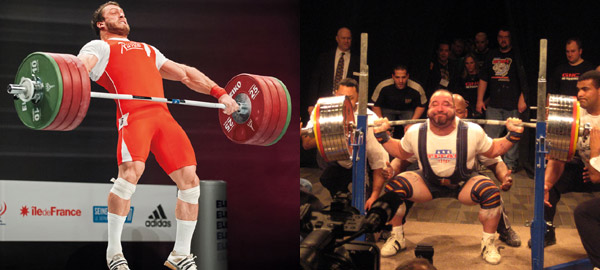
Olympic weightlifting (left) vs powerlifting (right) – two very different barbell sports.
Powerlifting vs Olympic Lifting – A Brief Explanation
Olympic weightlifting (or just weightlifting) consists of just two lifts; the snatch and the clean and jerk. In competition, the goal is to perform the heaviest lift possible; a single, maximum effort lift. The athlete gets three attempts at each of the two lifts and the total of the highest successful lifts determines the overall result. Olympic lifting is more of a test of an athlete’s explosive strength, power and technique rather than raw lifting strength.Powerlifting on the other hand is a pure strength sport. Powerlifting involves three lifts – the squat, bench press, and deadlift. Powerlifting is similar to Olympic weightlifting in the sense that the lifter gets three attempts at each lift. However, powerlifting is more about moving as much weight as absolutely possible. Some powerlifting federations even allow the use of supportive equipment such as a bench shirt or squat suit (they store elastic energy) to help the lifter complete the rep.
Olympic Barbells
A men’s Olympic barbell is 2.2 meters long (7.2 feet) and weights 20 kilograms; about 44-lbs. The sleeves are 50 mm in diameter, and the shaft is 28 mm in diameter and make up about 1.3 meters of the bar’s total length. (see below)

The women’s Olympic barbell is slightly shorter at 2.1 meters long (6.9 feet) and weighs 15 kilograms (roughly 33 pounds). The shaft is also slightly thinner at 25 mm thick (.98 inches). Women’s Olympic bars do not have center knurling.

Olympic barbells have a couple unique characteristics. First is the whip (the ability to store elastic energy) of the bar. This flex happens as a result of the shaft being slightly narrower than other barbell types (28 mm versus 29-31 mm). Professional athletes use this elasticity of the bar to their advantage during a lift.
Olympic bars must also have smooth rotating sleeves. This allows the lifter to get under the bar quickly without having to release their grip. This effortless rotation is often achieved by using expensive needle bearings in the sleeves. Finally, the quality of Olympic bars is such that they have to withstand repeated drops from overhead positions.
Powerlifting Bars
A powerlifting barbell differs from an Olympic barbell in that it is more stiff or rigid in order to better accommodate heavier weights, and without the flex found in an Olympic bar. While a powerlifting bar is generally the same dimensions of the Olympic bar, it can also be longer and/or thicker to allow for more weight to be added.
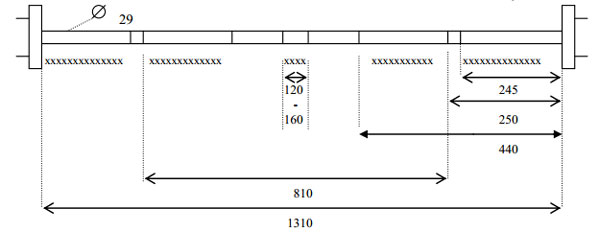
Also slightly different are the markings on the bar; or the knurling. The grip marks are closer together on a power bar (32″ apart, vs 36″ on an Oly bar). The grip (hash) marks of a power bar are used to check legal hand positions for the bench press, whereas the hash marks on Olympic bars are really nothing more than reference points. Power bars don’t really require the sleeves to spin so freely like they do on Olympic bars, so they use bushings rather than expensive bearings.
While there are always exceptions to the rule, power bars are generally more affordable.
Center Knurl & Bar Knurling
A random note on knurling. IWF-certified Olympic WL bars have the center knurl. However, many companies have started to leave the center knurling off of non-competition Olympic bars. Not only does a center knurl serve no purpose in Olympic lifting, but it can actually be uncomfortable with high sets of cleans typical in a CrossFit workout. Since CrossFit seems to be paying the bills lately, it only makes sense to be accommodating.
(For a list of barbells designed with Crossfit in mind, read this bar guide.)
Powerlifting barbells have the center knurling primarily for the back squat. The idea being that the knurling prevents the bar from sliding down the back on heavy lifts.
In terms of knurl depth or aggressiveness, power bars tend to be deeper, sharper and more coarse. Olympic bars for training are more mildly knurled than power bars, but competition Olympic bars can be just as aggressive as a power bar. Understanding they knurl depth of any given bar is where reviews are helpful (and you’re at the right site for that.)
In the Market for a Barbell?
If you know you’re a powerlifter or know you’re a weightlifter, well you know which bar type to buy. Easy. For those of you who CrossFit or follow programming that incorporates the Olympic lifts I would lean more towards an Olympic bar, or in the very least a multi-purpose (dual-marked, 28.5 mm) bar with no center knurling.
Serious lifters (even novices) should expect to pay anywhere from $250-$350 for a reliable performance power bar or multi-purpose bar. Weightlifters should expect to pay that as well; or even more if bearings are required.
Here are the most commonly purchased, reasonably priced bars currently on the market in all three categories of bars (power, Oly, and multi.)
Ohio Power Bar (powerlifting)
The Ohio Power Bar (OPB) meets all IPF specifications for powerlifting and exceeds pretty much all baseline specs for performance, and it does so for very little money. Available in three finishes (bare, zinc, and stainless) and in both an Imperial and IPF-certified kilogram version, this is easily the most popular power bar around.

The OPB has a super rigid, 205k PSI tensile strength shaft, dual-bronze bushings in both sleeves, a super aggressive outer and center knurl, and it starts at only $250 for the bare steel variant.
California Bar (multi-purpose)
American Barbell’s California Bar is a mildly knurled, dual-marked bar with no center knurl. Rated at 190k PSI it has a nice compromise between stiff and elastic, and the toned down knurling makes it great for both high-rep Oly work and slower, heavy lifts like the squat and bench press.
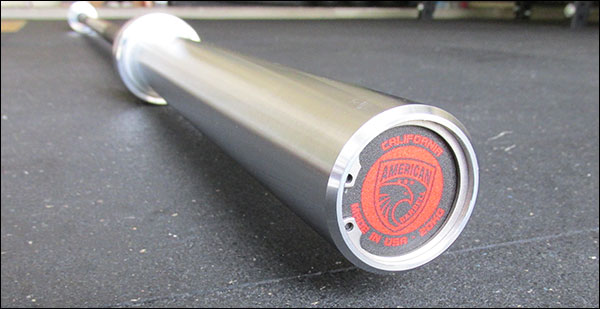
The California Bar is a lifetime investment. It’s American-made, it has a Cerakote finish that looks great and protects the shaft from oxidation better than most other finishes, and hard chrome sleeves that can take lots of abuse. This is a beautiful, high-performance bar that’s available in both a men’s and women’s version, and although the price is a hint higher than competing multi-purpose bars it is arguably one of the best options out there.
Vulcan Elite 4.0 (Olympic WL)
The Vulcan Elite 4.0 is a 28 mm, 20 kg, self-lubricating bushing bar with an incredible 221k PSI tensile strength and 206k yield rating. This is a chrome molybdenum bar with a matte, dense chrome finish on the shaft and engineered chrome sleeves. The Elite has an insane amount of whip, unrivaled steel, and great protection against oxidation.

The Elite adheres to all IWF specs and retails for $369, and the beauty of this bar is that it grows with you. It’s just as much an advanced level barbell as it is an affordable novice bar. It has moderate knurling typical of an Olympic training bar, but the center knurl is of a lower depth in order to be more accommodating to high rep clean sets; making this a good choice for elite CrossFit as well as Olympic training. Best bushing-based Olympic bar period.
More Bar Summaries and Reviews?
Here is my actual Olympic Barbell Review and Shopping Guide. It contains a much larger selection of current bars in all categories, and of varying prices. Additionally, use the menu at the top to see full reviews for specific bars.
Please share this article if you found it useful – or just to be nice. Thanks!
Random Extra Barbell Info Video




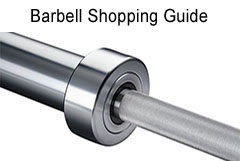

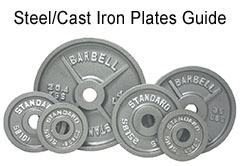

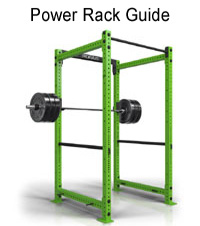
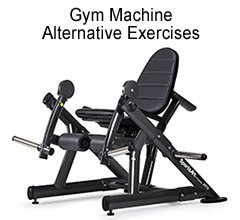








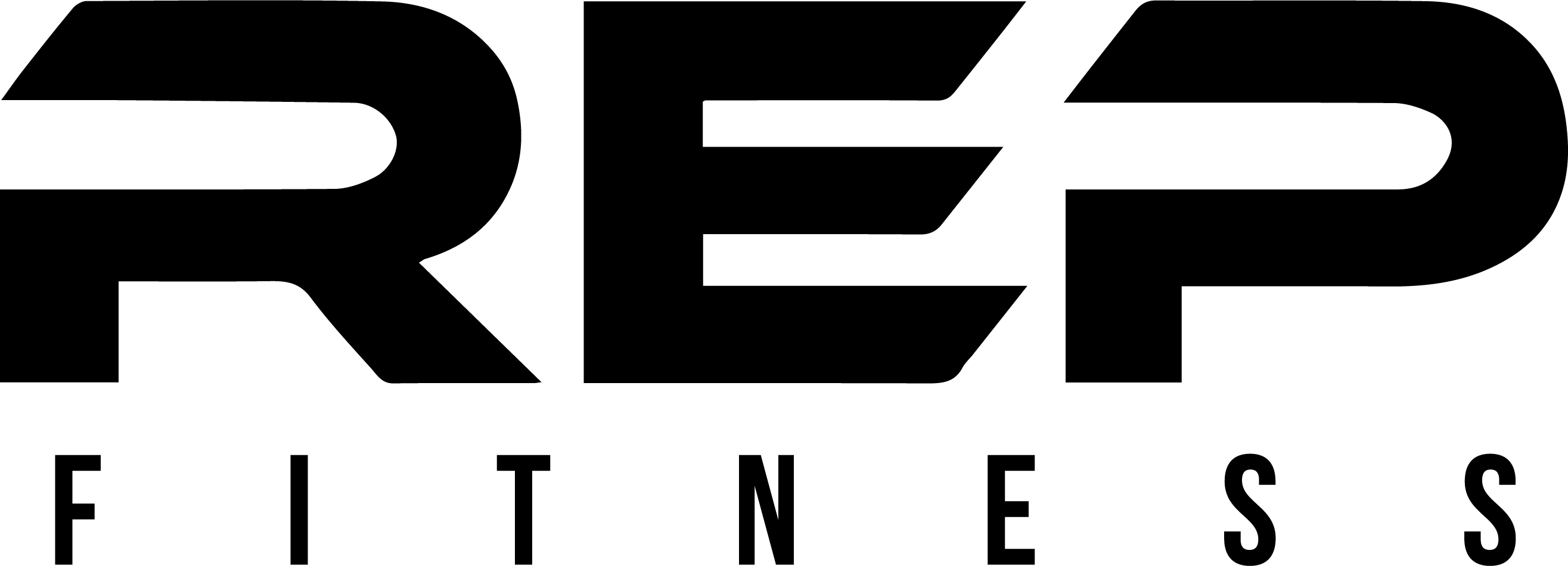
Hi J,
What do you think is better to get as a first bar? 28mm or 29mm. We are talking complete beginner here. So maybe starting off with the big lifts as well as some Olympic lifts.
Thanks
For a beginner I really don’t think it matters all that much. I mean sure, for Olympic lifts ideally you’d want a 28 mm bar, but it’s not as if newbies that start lifting with a 29 mm or even 31 mm bar would be doing themselves a disservice or anything like that. It’s such a minor adjustment to make later to switch bars, certainly not like learning bad form. So yes, if you get to decide what to put in a beginner’s hands, pick the appropriate bar for what they’ll be training as if they were going to stick to that, but if it’s a matter of just getting a bar to start lifting with, get what you can get.
The best solution is to make …if is possible a big invest for his personal gym…. i have an IPF certified pallini french bar with complet set for a mondial record….more 1100lbs in steel plates. And a comptetition Uesaka wheightlifting compet bar and 600 lbs of training and compet Pallini rubbers discs.. and. For technics mvment and increase grib i have a weightllifting female 25mm bar (the best for rowing)
i own Uesaka , DHS Uddeholm ,schnell and Eleiko…i prefer ELEIKO CERTIFIED COMPETITION BAR OF WEIGHTLUFTING …The Graal…The gold standart
for ideal results at” big 3″ a good P L bar is an obligation… but its less hard to please than a Weightlifting bar. ..
If you are going to do Powerlifting (bench press, squat, deadlift) and Olympic Lifting (Snatch and Clean & Jerk), I recommend a Cross-Fit bar (Olympic bar without the center knurling). Olympic bars have a wider center region without knurling, decreased diameter shaft, more elastic bar, and bearings on the sleeves. I do not agree with the author above that the differences between a Powerlifting bar and the Olympic bar are subtle.
As the Olympic lifter pulls the bar up for the clean, or the snatch, he grazes the thighs. The knurling can chew up your thighs. In addition, I never got the whole center knurling for an Olympic bar. If you are going to do power clean reps, or jerks or push presses from the rack, you will tear up your upper chest and neck with the center knurl. If you learn how to extend your elbows out as you drop under the weight, the center knurl is completely unnecessary.
The grip on a smaller diameter bar is better, the elasticity – paramount for very quick movements – is much better, and the immediate response of the bearings to turn the shaft – extremely important during the split second you are dropping under the bar – is much much better.
As for Powerlifting with an Olympic bar, unless you are lifting very very heavy weights, I do not see that this would be a bad compromise. The Olympic bar’s elasticity can work against the power lifter when there is enough weight on the bar to cause considerable flexing, and the sensitive sleeve rotation of the Olympic bar is not something that benefits the Powerlifter.
I hope you find this helpful.
I actually prefer you use an Olympic barbell for deadlifts due to the diameter and the elasticity, but would NEVER use one for heavy powerlifting squats. The center knurl is essential for a low bar squat, which the majority of PL’ers use, and a rigid bar is crucial for squats above about 220 Kg.
That being said, as a beginner, go with a Crossfit bar. Most likely you won’t be squatting past 180 Kg for a couple years anyway and, unless you are going into a competition which requires a maximum squat, low bar squat is a different movement than the majority of recreational exercisers use.
Its a possibility of a Bad surprise in competition if you train heavy D.L with an oly bar ….(why not a woman bar 0.98″ (25mm).lol.. but if at the compet you lift on a 29mm like my Pallini or a Texas power ..(ultra stiff) ….personaly i train D.L with my Pallini 29 ultra stif …and if i have chance i lift on Eleiko at compet (Eleiko power baresteel bar in despite of his 29mm diameter is relatively whippy !!! )
The center knurl is actually an important feature for the squat to provide grip to the back, the last thing you want is a smooth bar when you’re squatting near or at 1RM.
On the other hand, good luck conventional deadlifting with a knurled bar and not ravaging your shins! You’ll be bleeding all over the bar.
I recently purchased 32mm olympic bar and im just wondering if it’ll be okay for training my cleans at home. Or should i have purchased something with a smaller diamter?5
You can use it. If a thicker shaft doesn’t bother you, then no worries. It’s not ideal or anything, but it will still work.
Not the most ideal for an Olympic lifter, but the likes of Paul Anderson made a lot less perfect equipment (a big understatement) work for him.
Air Jordan shoes never made a Michael Jordan athlete.
Well I can’t argue with that.
Anderson was a no conventional superheavy lifter …vs other same Height/weight lifters (Serge Reding .Shane Hamman..Behador Mouleia ….all 5’9″ over 330lbs) Dixie Derrick was very very superior in leg stregnht (even compare to a 6’6″ giant of today like Salimi or Talakadze) he prefer adapt artisanal gear for his monstruous squat (2 cask fill of concrete or 2 traîn wheels over 1000 and 1200 lbs each) but in pulling he was not at level of actual jus because he refuse use strap and had short fingers vs A monster like koklyaev or Big Z..he was advandaged by a regular 28mm and no with 2″ shaft of an appollon axle
I’m looking for a no whip deadlift bar. Any suggestions?
Yeah pretty much any power bar that’s 29 mm and in the 190k-220k PSI range. ‘Deadlift bars’ like the Ohio Deadlift, TDB, and Okie are going to be whippy because they’re all 27 mm vs 29 mm, and longer than standard power bars.
Look at the Vulcan power bars for super rigid, or even the standard (non-deadlift) Ohio Power Bar. The Super Power Bar from AB is a favorite of mine, but it’s not available at the moment and hasn’t been for some time. The TPB isn’t the most rigid bar you can buy, but it’s up there. I’m training with Vulcan’s new Absolute Power Bar at the moment for a review, and it’s pretty damn stiff. Has a nice knurl to it as well – black oxide shaft so it’s pretty sticky. But I guess the point to all this is that you cannot buy an actual deadlift bar if you don’t want the whip, you’ll have to buy a standard power bar.
Look into the Texas Power Bar.
http://www.texasstrengthsystems.com/products/bars/texas-power-bar-tpb
Texas Power Bar
Holy crap, this was a good read! Thanks for the helpful information. I noticed my cleans felt different at different gyms, and noticed the different knurlings (now a word I know), and didn’t think much of it. Now it makes sense. Great post.
I do the power lifts and the Olympic lifts too. What is the best bar which will accommodate all exercises? And for a good price?
A lot of that depends on what you consider to be a good price, but I’d probably recommend avoiding straight up power bars if you Oly lift and sticking with something in the 28-28.5 mm range. 28.5 mm multi-purpose bushing bars like the Rogue Ohio line and Vulcan Standard line offer good performance for both types of lifts up to pretty respectable numbers. American Barbell has similar bars to these two lines but almost all of their bars are 28 mm rather than 28.5 mm. This is kind of an advantage in my personal opinion – especially if you favor the Olympic lifts – but at the end of the day the difference is minimal.
I’d say look at the American Barbell California or even their training bar, Rogue Bar 2.0 or one of the Ohio bars, and 28.5 mm Vulcan Standard. There are of course less expensive bars from the re-branding import shops, but the money you save will not cover the cost of a replacement bar, and that’s likely to come up in a couple years with a cheap imported bar. I say buy it right the first time so you only have to buy once.
Great, thank you!
Thoughts on the American Barbell Mammoth bar? Worth the premium over one of the Rogue power bars?
I’m a big fan of American Barbell bars, but I think the Mammoth is an odd product. The $550 price tag is because it’s stainless steel, but the true benefit of that material (the feel – the grip) is negated by having a finish on it. It doesn’t matter if Cerakote feels close to as grippy as stainless, there is simply no point in paying a $200 premium that you can’t benefit from. That is to say, were this bar 210k alloy steel with Cerakote, it would feel about as good as stainless in the hands, but it would cost only $300-$350. So yeah, nice bar, extremely (and unnecessarily) overpriced. I personally wish they would have just kept making the Super Power Bar – one of my favorite power bars of all time.
I kept looking at it and wondering what i was missing to justify that price.
As I’m transitioning out of crossfit and more into power lifting (though I’m still under a 1,000 lb total), I want to get a stiffer bar with the center knurling. I’ve got a Vaughn bar and a Bomba bar and I’d gladly sell off my Bomba for a proper power bar.
Yeah it’s just that stainless premium is all. Covered up with fancy ceramic.
In terms of alternatives, the Ohio Power Bar for $250 is solid, but it’s bare steel. For zinc there is the Vulcan Power Bar. For oxide, the Vulcan Absolute PB. You can pay more than these three bars for a power bar, but you don’t need to. It’s all luxury beyond that. Power bars just aren’t as expensive to make and sell because the shaft is thicker, they always have just bushings, and generally they have less expensive finishes (when not stainless of course). Vaughn is good enough to keep, Bomba should go though – that bar is very weak in this market, in every sense of the word. Sell it before you bend it powerlifting. When straight you can dent your power bar price a little, but bent it’s worth nothing.
I sold my Bomba bar and some other unused equipment and went with the American Barbell Elite Power Bar. I was trying to choose between that and the Vulcan Absolute Bar. The Vulcan bar was going to be out of stock for 40 days or so. AB also offered to give me a discount after I messaged them on Facebook, so I went that route to get the stainless bar.
I’ll let you know what I think after I’ve used it for a bit.
Just today I noticed Vulcan is out of a lot of bars. They doing booming business lately I guess. Is all good though, AB is top-tier too.
And yeah I’d be curious to know how you like the knurl on that one. Thanks Jim
So I got my first workout in today with the American Barbell Elite Power bar and I must say, I’m impressed. I don’t have near the experience that you do, but I have lifted on a variety of of bars while I was a CrossFit coach. I would consider thie knurling to be relatively mild, but in an amazing way. I used to prefer the cheese-grater knurling but this is something completely different. It’s mild, but incredibly “sticky”. I felt completely locked in when I grabbed it, and even more so when I added some chalk.
I immediately thought of it as the difference between a dirt bike tire and a track bike tire. One is chunky and aggressive to grab loose and uneven terrain, the other is fine and grippy to stick to high speed flat surfaces. It’s already a real winner in my book.
Oh, and do you have an Instagram account? I can tag you in my post where I just used it for the first time.
American Barbell knurl is perfect for people who dislike sharp bars. Grip is good for being as soft as it is. And no, I’m embarrassed.. I need an IG account still. I’m so bad with social media.
Can you help me understand what characteristic it is that allows some bars to be so whippy under heavy loads without deforming (oly bars) vs power bars that have no whip. I’m sure there’s a loot of science to it but I’m kind of fascinated seeing the heavy loads those oly bars move without deforming.
Mostly it’s just diameter, but there are other factors including the inherent properties of the formula, the quality of the finished steel (lack of impurities), the way it’s worked, stuff like that. Most bars manufacturers just pick steel ‘off the rack’ so to speak. Very few have their own proprietary blends and dedicated mills. But yeah basically 28 mm is in that sweet spot for elasticity for the type of weights being used, but add 1 mm and it adds a ton of rigidity. Heat treating can add even more stiffness. I’m sure a metallurgist could elaborate on this much more and get all technical, and maybe someone will!
Would it make any difference in training to use an Olympic bar for powerlifting? If so what? Or are they about the same? Would it hurt your training in power lifting if you use an Olympic bar? If so what?
Other than the shaft diameter and the rigidity factor that I have already mentioned, there is no real reason why you can’t use any bar you want for any lift you want. Think about it this way. You can play kickball with a basketball and you can play basketball with a kickball, but when you get pretty good at one or the other, you’ll probably start looking to use the proper equipment for the sport.
Its better than use a craps 150 $ fake oly bar. At 350$ axle of powerbar is more than decent .( you risk to use your wrist… because spin of powerbar is often awful… but axle or sleeve cannot fail
avoid ugly fishing rod and buy allways a true Powerbar . 29mm…86″(2m20)..perso i love Pallini and Rogue B&R (I prefere Eleiko feel of bare steel but Eleiko is Too whippy !!!! and its a deception to learn than Eleiko dont use specific steel or heat treatment for his powerbar !!!!no just same steel of oly bars but 1mm thicker…(but bar is a true spring !!!trust me a 28mm Uesaka barbell whip less than a 29mm eleiko) ..after Eleiko can be a good choice if you like “mix” train and Eleiko stay a great bar !! (bushing is very smooth and in gmy old ym i prefer use it for Rack jerk or power clean than use and old rusty W.L bar ..
I often use Eleiko XF for powerlifting because I prefer the feel of a 28 mm shaft, and I love Eleiko knurling. Don’t forget that this article isn’t really geared towards a fellow with a 600-pound+ squat, as explaining the difference in barbell types is really something a newer lifter would be looking up. New lifters sure as hell aren’t buying an Eleiko Powerlifting Bar in this stage of their lifting career, right? =p But you are right, Eleiko could at the very least heat treat that steel to get some more rigidity out of it for the power bars – something. Charging $850US+ certainly leaves a little bit of funds for that process I’d say.
Very interresting this problematic of steel grade and treatment…..Eleiko stay THE best oly bar …but powerlifting isnt heir speciality … why travel to Ryad for hoping eat the best Pig feet and drink cider ! .for power ….trust in american makers ..Power is an american Sport (or french ….rigid manganese steel for axles is a long french tradition).. …like spring Chrome-Vana steel is a jewel of SWEEDEN
Pallini is a genius little barbell Maker and Seller… in a little industrial zone of normandy ( french) country. This little society beggin his activity in the early nineties headed by a great enthusiast of Weigltifting ,Mr Liberato Pallagrosi (retired since early 2010 years). In despite of small size of structure 1) quality of production is allways in top level…with chinese subcontractor ONLY FOR LITTLE ACCESSORIES LIKE FRACTIONAL PLATES OR COLLARS…2)Steel is totally different for Very whippy oly bars and very rigid power bar 3)if Pallini is far of Eleiko for oly 28mm bar (finish is no perfect) theses bar stay very very nice to use even for very big lifts (i can be witness for use it around of à level 140/200..kg no lbs.)
Pallini is best non certified bar of world.. 4)Pallini bumpers are THE BEST OF WORLD ex aequo with Uesaka !!! No sign of degradation after decades of intensive use.!!! 5) in France all administration and greats parts of gear in gyms are Pallini…i never see a Pallini Snap ….and more important 6) Pallï powerlifting 29mm bar ARE IPF CERTIFIED. And i own it…its the best powerbar of world (and universe if Frederico Fermi was right) black zinc finish very nice and last long.no rust…goog grip. 7) Pallini ipf Gear is 25% cheaper than Eleiko… 8) Sleeves fixation with littles steel balls is indestructible 9) Steel plates IPF Pallini are very thins .my twelve red 25kgs more my two 50kgs in unic pile no exceed 38 centimeter (15 inchs)of lenght 10) i own a Set Power Pallini of more 1100lbs and for oly lifts i use a set of 500lbs (bumpers Pallini) on a certified Eleiko competition bar and ZERO FAILURES
Excellent discussions. I really enjoyed the clarification s.
I have a very very well made vintage bar with 30 inch markers. What is that all about 30” not 32”?
I don’t personally know when the whole 810 mm distance became a thing. Could be your bar predates that standard, so the distance was just where ever the manufacturer wanted to put it. Could also be the manufacturer didn’t care. Who can know
I just wonder is it possible to do Olympic lifting by using power lifting barbell
yes of course
What is the best bar you recommend for bench press
A power bar ideally, but to say which is the best power bar for benching without taking into considering knurl depth/aggressiveness, finish and feel, and price is kind of impossible. I guess to put all that another way, it’s too vague of a question to really answer. Need more information.
I plan on just sticking with deadlifts/bench press/squats, and I doubt I’ll be doing any insane weights in the future. Would it make sense to buy a bar with standard knurl rather than a more aggressive power bar? My gf will be using the barbell as well, so being that neither of us plan to do 500 lb deadlifts anytime soon, I feel like an aggressive knurl would just cause unnecessary wear to our hands (She is a surgeon so doesn’t want big ol calluses). Is this the correct logic, or should I really get a power bar no matter the weight if I don’t intend to do any Olympic lifts? Thanks
You can skip the aggressive knurl if you want. It’s not a rule.
Which bar would you recommend for someone who’s been lifting for decades, but has injuries that prevent them from ever lifting very high weight? This would be for squat/bench/very light Romanian deadlifts. I’m currently repping 315/225/185 for those lifts, respectively, and nagging old injuries and age will prevent me from ever pushing up 545/405/495 for any number of reps. In other words, are these bars deemed overkill for lifter who won’t use them anywhere near their limits? In such an instance, would the more common $100-$150 bar truly be a waste?
Thanks for your help.
You could buy something basic like a Rogue Echo or comparable economy bar from any worthwhile manufacturer. I still wouldn’t send you to the local box store or Amazon for a bar, but you certainly don’t need to spend $300+. Keep in mind, cheapo bars tend to have pretty weak knurl. If you still want to feel the bar that’s another reason to go with someone reputable enough to know to actually knurl the bar.
5 years later…ALL PERFECT FOR MY GREATS BARS….. all my 8 barbells are in perfect conditions. But i have friends and neighbours DURING LOCK DOWN , I SEE OR HEAR ABOUT CHEAP BARS SNAPS IN TWO OR SEVERELY BENDED. ! P,LEASE AVOID FAKE MONEY SAVING ! USE TRUE BREND ( ROGUE OR TEXAS ARE NOT EXPENSIVE BUT THEY ARE TRUE STEEL I LOVE ROGUE REFERENCE OF 190 KPSI OR OVER….. !!) BUT CRAPS 150 $ BAR NO NO NO . LEVEL IS NOT PROBLEM. BUY TRUE BARS AT 350 $ ITS POSSIBLE TO FOUND ONE DECENT BAR (AXLE IN FIRST)